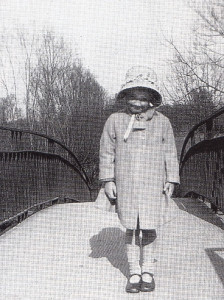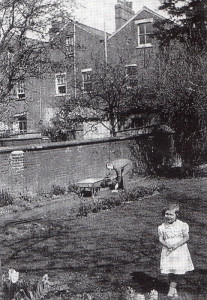
If you visit the city of Oxford today you’ll find it greatly changed from the one I knew as a child in the 1930s. Bicycles were then a more common sight than cars, and tall, many-roomed houses in quiet streets were the homes of University families such as ours. There was a walled garden, I remember, where I made mud pies. “But don’t tell Daddy!” I cautioned an aunt who was holidaying with us. University professors did not appreciate messy offspring.
Walks took us children past the centuries-old colleges to see tame deer at Magdalen, stately swans on the canal and ducks in the University parks. Other walks led us by the old stone walls which had once encircled the city, or along the towpath, to watch the rowing teams practising for the Oxford-Cambridge Boat Race.
Those were carefree days, preceding the upcoming threats of war. We children didn’t read the newspapers or listen to news on the radio, and there was no TV then.
Playthings were few and simple: lead soldiers and toy trains for boys; dolls and dolls’ houses for girls. Plastic had not yet appeared in the toy world.
I remember fish, meat and groceries being delivered by boys on bicycles, and the milkman’s horse-drawn van stopping by our house each day.
We had a small Morris car with a luggage grid on the back, and bright orange direction indicators which flew out of its sides like miniature wings. We children unfortunately suffered from car sickness, so Father had lots of practice with emergency stops.
Trains were plentiful, and there were many interesting places to visit. What a thrill it was to stand on a platform as an express hurtled past, or to climb up on to a railway bridge and be lost in a scary cloud of smoke and steam as a train roared by underneath!
In 1938 we moved to an upstairs flat near my father’s college. The view from the bathroom window across to the towers and spires of the University gave an artist friend the idea to paint a picture, with his easel propped up in the tub.

A year later, on Sunday September 3 1939, we were out in the country helping with the harvest when the farmer came running to tell us that war had been declared, The previous months had seen the beginning of Air-Raid Precautions: a long-handled shovel for dealing with incendiary bombs stood in the hall beside buckets of sand; the bathtub had to be left filled with water (no artist painting in it now!); and windows were criss-crossed with adhesive tape to prevent them splintering from blast.
Air-raid shelters were also built: ours was in the depths of the college, and my father was its Air-Raid Warden.
Plans were made to protect us children from the expected enemy invasion by sending us overseas to Canada or the United States. We left in July 1940, and after a week at sea reached Quebec, then boarded a train to take us to our wartime homes. We returned to England at the end of the war, ironically to find that children from London had been evacuated to the safety of Oxford!
A few years later I came back to Canada to settle on Vancouver Island. Sometimes, here on this other island, I think of the Oxford of my English childhood as I remember it still, such memories being as much mine to treasure as the faded photographs saved from those years long ago.
Elizabeth Symon








